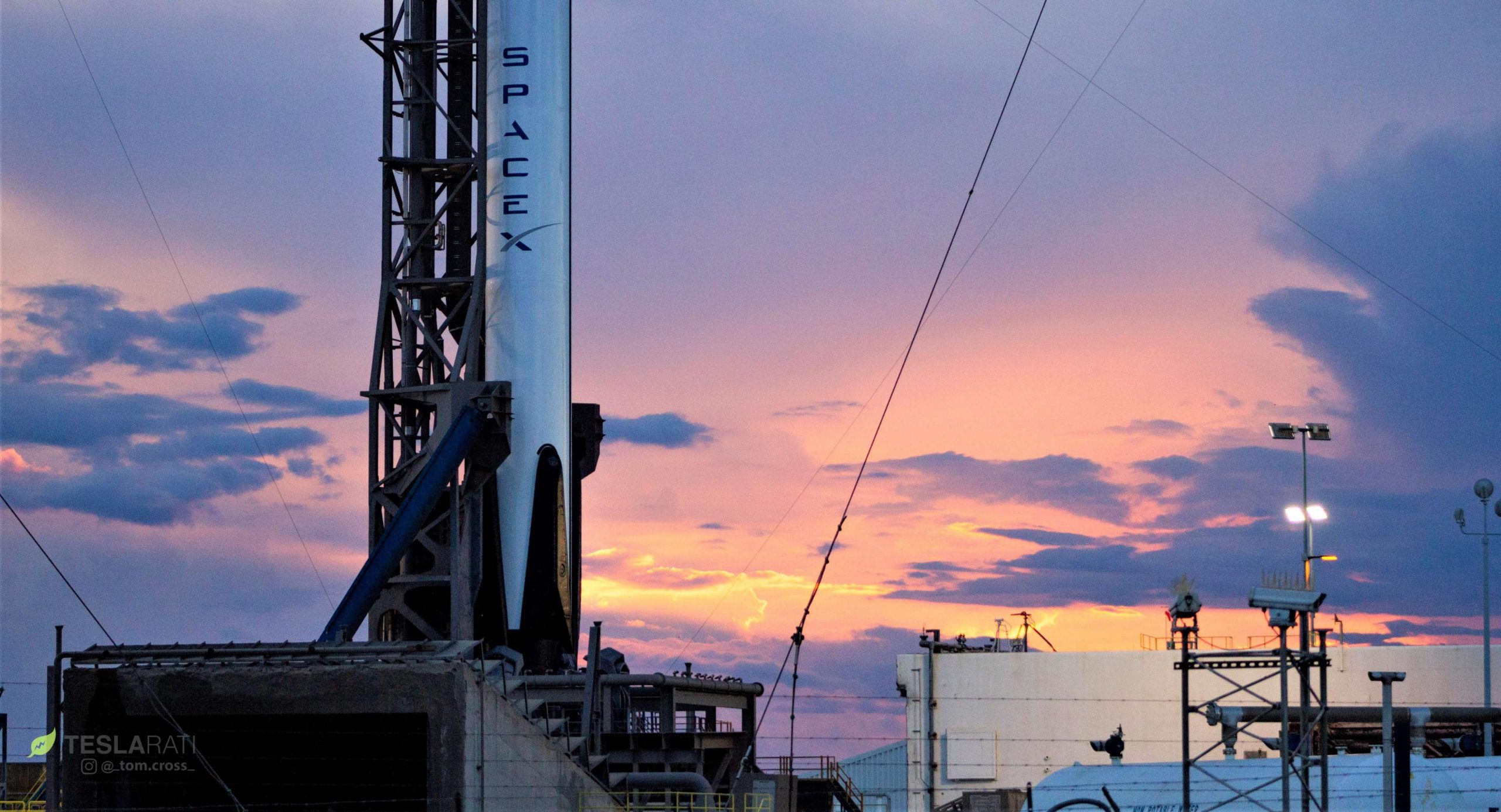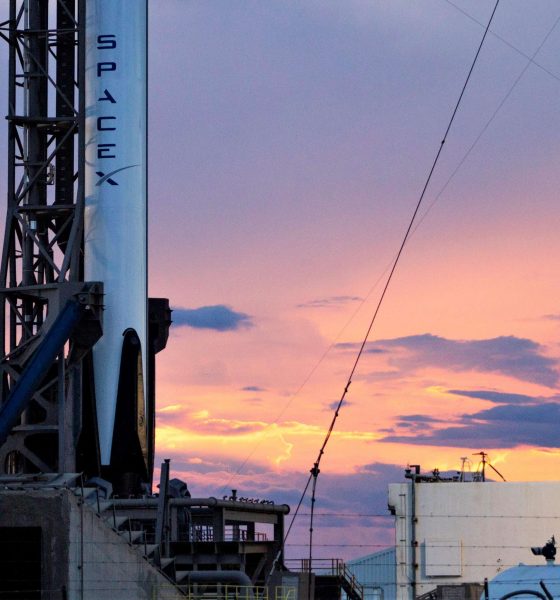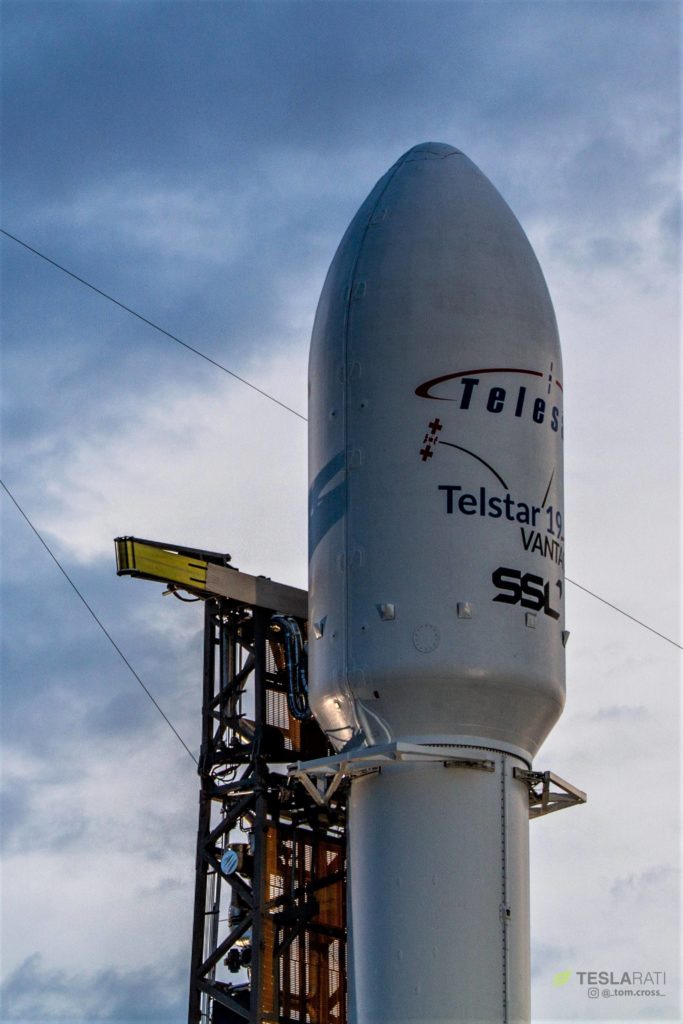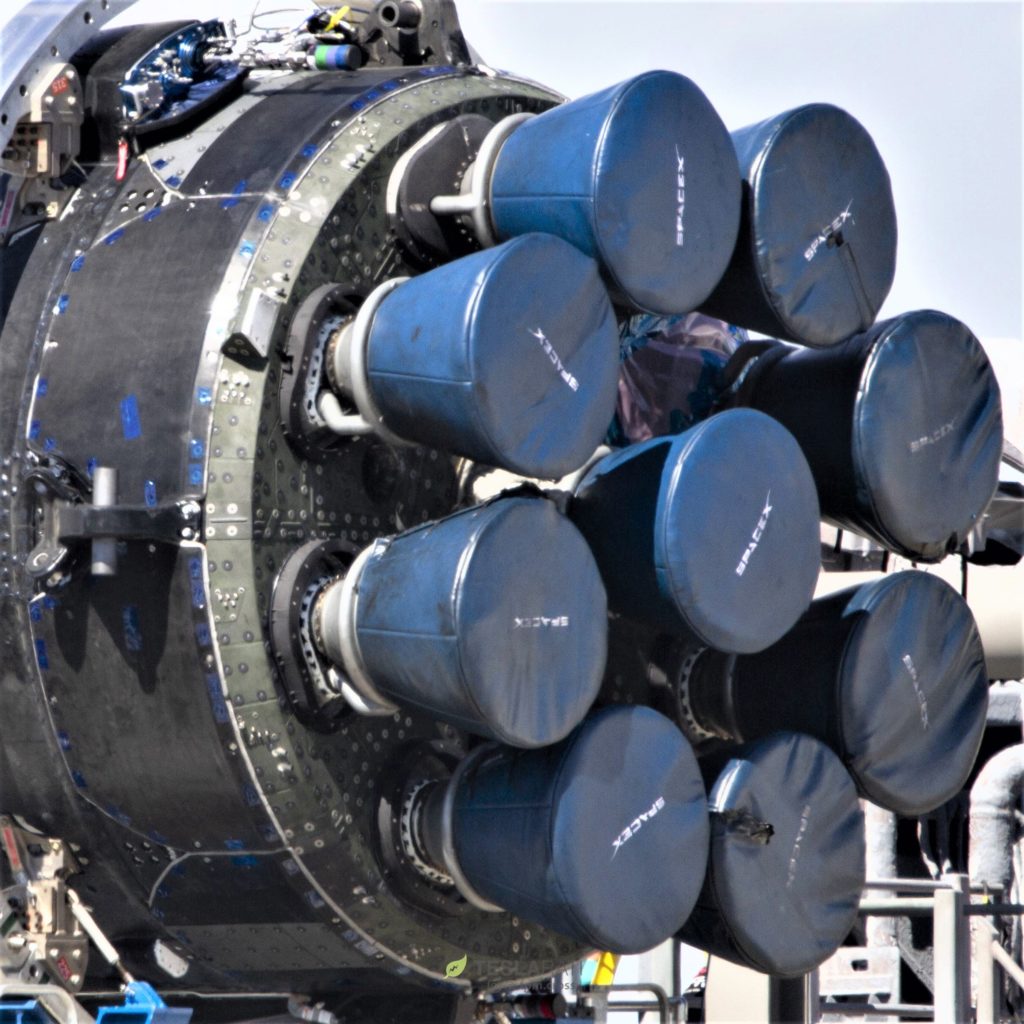

News
SpaceX Falcon 9 Block 5 ready to launch second largest communications satellite
Falcon 9’s liftoff is scheduled tonight, 11:38 PM EDT/03:38 UTC
After a long slip and slide from mid-August to September 9th, SpaceX and customer Telesat Canada are ready to launch the second largest communications satellite to a geostationary transfer orbit, Telstar 18V, following in the footsteps of a July 2018 launch of the slightly heavier (~15 kg) Telstar 19V satellite.
https://twitter.com/_TomCross_/status/1038953464250986497
Originally expected to occur as little as a month after Telstar 19V (launched July 22nd), Telstar 18V experienced a number of somewhat mysterious slips, moving from the third week of August to the end of August, then slipping again from September 8th to September 9th, today. Publicly, it’s entirely unclear what caused that unusual three-week delay, but the obvious answers revolve around some combination of multiple problems with the launch pad (LC-40, Cape Canaveral Air Force Station), rocket (B1049, a new Falcon 9 Block 5 vehicle), payload (a vast, 7060-kilogram spacecraft), and more.
Ultimately, there is simply a lot that can go wrong with the rocket itself and the vast swath of infrastructure that must work near-flawlessly, in concert, if a launch is to even be attempted, let alone be completed successfully. It may be rather frustrating as a follower (or raving addict) of rocket launches and SpaceX in particular, but it never hurts to remember that being able to watch an official livestream at all is an absolute privilege and not something that SpaceX or any other rocket company is required to provide. The purpose of SpaceX’s present-day business is business, after all, and successfully placing customer payloads (be that customer NASA, the USAF, or a commercial entity like Telesat) is the name of that game – quite literally everything after that comes in a firm second place.
- Falcon 9 B1047 launched sister satellite Telstar 19V on July 22nd. (Tom Cross)
- Falcon 9 B1049 arrived at the launch pad just hours after the successful launch of Telkom-4, August 7. This rocket will launch Telstar 18V before landing on drone ship Of Course I Still Love You. (Tom Cross)
Like it’s 7076 kg Telstar 19V customer, launched in late July atop another SpaceX Falcon 9 rocket, Telstar 18V is nearly identical, although the satellite will wind up being placed in a different orbit to serve entirely different markets – 19V is focused on the Western Hemisphere while 18V is primarily dedicated to the Eastern Hemisphere, particularly Southern Asia.
Falcon 9 B1049 and a Falcon 9 upper stage – both fresh off the assembly line and Texas acceptance testing – will launch the satellite, likely to a relatively low geostationary transfer orbit like Telstar 19V. That lower elliptical orbit will require the satellite to bring along and use more of its own propellant to reach its final orbit, but the lower energy required from Falcon 9 means that the rocket preserves the propellant margins necessary to attempt a landing aboard drone ship Of Course I Still Love You, currently stationed several hundred miles off the coast of Florida.
The launch will be streamed live as per SpaceX tradition, and the link to that webcast can be found below.
For prompt updates, on-the-ground perspectives, and unique glimpses of SpaceX’s rocket recovery fleet check out our brand new LaunchPad and LandingZone newsletters!

Elon Musk
Starlink passes 9 million active customers just weeks after hitting 8 million
The milestone highlights the accelerating growth of Starlink, which has now been adding over 20,000 new users per day.

SpaceX’s Starlink satellite internet service has continued its rapid global expansion, surpassing 9 million active customers just weeks after crossing the 8 million mark.
The milestone highlights the accelerating growth of Starlink, which has now been adding over 20,000 new users per day.
9 million customers
In a post on X, SpaceX stated that Starlink now serves over 9 million active users across 155 countries, territories, and markets. The company reached 8 million customers in early November, meaning it added roughly 1 million subscribers in under seven weeks, or about 21,275 new users on average per day.
“Starlink is connecting more than 9M active customers with high-speed internet across 155 countries, territories, and many other markets,” Starlink wrote in a post on its official X account. SpaceX President Gwynne Shotwell also celebrated the milestone on X. “A huge thank you to all of our customers and congrats to the Starlink team for such an incredible product,” she wrote.
That growth rate reflects both rising demand for broadband in underserved regions and Starlink’s expanding satellite constellation, which now includes more than 9,000 low-Earth-orbit satellites designed to deliver high-speed, low-latency internet worldwide.
Starlink’s momentum
Starlink’s momentum has been building up. SpaceX reported 4.6 million Starlink customers in December 2024, followed by 7 million by August 2025, and 8 million customers in November. Independent data also suggests Starlink usage is rising sharply, with Cloudflare reporting that global web traffic from Starlink users more than doubled in 2025, as noted in an Insider report.
Starlink’s momentum is increasingly tied to SpaceX’s broader financial outlook. Elon Musk has said the satellite network is “by far” the company’s largest revenue driver, and reports suggest SpaceX may be positioning itself for an initial public offering as soon as next year, with valuations estimated as high as $1.5 trillion. Musk has also suggested in the past that Starlink could have its own IPO in the future.
News
NVIDIA Director of Robotics: Tesla FSD v14 is the first AI to pass the “Physical Turing Test”
After testing FSD v14, Fan stated that his experience with FSD felt magical at first, but it soon started to feel like a routine.

NVIDIA Director of Robotics Jim Fan has praised Tesla’s Full Self-Driving (Supervised) v14 as the first AI to pass what he described as a “Physical Turing Test.”
After testing FSD v14, Fan stated that his experience with FSD felt magical at first, but it soon started to feel like a routine. And just like smartphones today, removing it now would “actively hurt.”
Jim Fan’s hands-on FSD v14 impressions
Fan, a leading researcher in embodied AI who is currently solving Physical AI at NVIDIA and spearheading the company’s Project GR00T initiative, noted that he actually was late to the Tesla game. He was, however, one of the first to try out FSD v14.
“I was very late to own a Tesla but among the earliest to try out FSD v14. It’s perhaps the first time I experience an AI that passes the Physical Turing Test: after a long day at work, you press a button, lay back, and couldn’t tell if a neural net or a human drove you home,” Fan wrote in a post on X.
Fan added: “Despite knowing exactly how robot learning works, I still find it magical watching the steering wheel turn by itself. First it feels surreal, next it becomes routine. Then, like the smartphone, taking it away actively hurts. This is how humanity gets rewired and glued to god-like technologies.”
The Physical Turing Test
The original Turing Test was conceived by Alan Turing in 1950, and it was aimed at determining if a machine could exhibit behavior that is equivalent to or indistinguishable from a human. By focusing on text-based conversations, the original Turing Test set a high bar for natural language processing and machine learning.
This test has been passed by today’s large language models. However, the capability to converse in a humanlike manner is a completely different challenge from performing real-world problem-solving or physical interactions. Thus, Fan introduced the Physical Turing Test, which challenges AI systems to demonstrate intelligence through physical actions.
Based on Fan’s comments, Tesla has demonstrated these intelligent physical actions with FSD v14. Elon Musk agreed with the NVIDIA executive, stating in a post on X that with FSD v14, “you can sense the sentience maturing.” Musk also praised Tesla AI, calling it the best “real-world AI” today.
News
Tesla AI team burns the Christmas midnight oil by releasing FSD v14.2.2.1
The update was released just a day after FSD v14.2.2 started rolling out to customers.

Tesla is burning the midnight oil this Christmas, with the Tesla AI team quietly rolling out Full Self-Driving (Supervised) v14.2.2.1 just a day after FSD v14.2.2 started rolling out to customers.
Tesla owner shares insights on FSD v14.2.2.1
Longtime Tesla owner and FSD tester @BLKMDL3 shared some insights following several drives with FSD v14.2.2.1 in rainy Los Angeles conditions with standing water and faded lane lines. He reported zero steering hesitation or stutter, confident lane changes, and maneuvers executed with precision that evoked the performance of Tesla’s driverless Robotaxis in Austin.
Parking performance impressed, with most spots nailed perfectly, including tight, sharp turns, in single attempts without shaky steering. One minor offset happened only due to another vehicle that was parked over the line, which FSD accommodated by a few extra inches. In rain that typically erases road markings, FSD visualized lanes and turn lines better than humans, positioning itself flawlessly when entering new streets as well.
“Took it up a dark, wet, and twisty canyon road up and down the hill tonight and it went very well as to be expected. Stayed centered in the lane, kept speed well and gives a confidence inspiring steering feel where it handles these curvy roads better than the majority of human drivers,” the Tesla owner wrote in a post on X.
Tesla’s FSD v14.2.2 update
Just a day before FSD v14.2.2.1’s release, Tesla rolled out FSD v14.2.2, which was focused on smoother real-world performance, better obstacle awareness, and precise end-of-trip routing. According to the update’s release notes, FSD v14.2.2 upgrades the vision encoder neural network with higher resolution features, enhancing detection of emergency vehicles, road obstacles, and human gestures.
New Arrival Options also allowed users to select preferred drop-off styles, such as Parking Lot, Street, Driveway, Parking Garage, or Curbside, with the navigation pin automatically adjusting to the ideal spot. Other refinements include pulling over for emergency vehicles, real-time vision-based detours for blocked roads, improved gate and debris handling, and Speed Profiles for customized driving styles.











